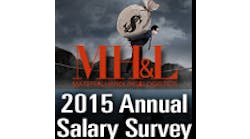The blast from Icelandic volcano Eyjafjallajökull has catapulted risk management onto corporate agendas again after a brief dormancy. The same thing happened in 2005 following Hurricane Katrina. As with all high-impact, high-profile events, natural disasters expose the obvious vulnerabilities inherent in all supply chains, and altering business priorities is a natural response.
But managing supply chain risk should be a corporate priority long before disaster strikes. Internal bottlenecks, equipment failures and inventory shortages, while not as visible, are more common than natural disasters, and they too can disrupt the flow of materials.
These “low-profile” scenarios deserve even more attention now, as the economy shifts to recovery. Drastic operational cuts may have weakened already fragile supply chains based on just-in-time sourcing and distribution. And, generally speaking, complex, extended supply chains have reduced costs for brand owners, but the downside is loss of control.
“For many years now, companies have turned to excessively distant supply chain structures to achieve lower pricing,” says Michael L. Hetzel, vice president Americas at quality and engineering services firm Pro QC International, in a recent article distributed to American Society for Quality members. “And one of the consequences has been the reduction in the ability to control and manage quality.”
By over-outsourcing, Hetzel says, U.S. manufacturers have essentially isolated people in procurement, quality, design and logistics from one another. As a result, each function works toward its own motives and metrics without understanding (or caring about) the impact they have on the system as a whole.
And like the proverbial rubber band stretched to its limit, a supply chain made of loosely connected functions is more likely to snap than a strong system of interconnected links. Events like supplier bankruptcies, government regulations, capacity constraints and other unforeseen problems have the potential to become catastrophes that spin the entire system out of control.
“What we observed among companies that failed is they didn't control the entire supply chain, which is a group of suppliers that are well dispersed and have many supply chains of their own,” Hetzel says. “This has been the biggest failure mode I've observed, and the most stunning example is Mattel,” he adds, referencing the toymaker's 2007 recall of nearly one million lead-coated toys made in China. “By its own admission, it had inspection processes in place for its final product but ignored the input — specifically the paint.”
That's why Hetzel recommends manufacturers inspect components either at the source factory or incoming at receiving. “Yet these companies will often refuse to invest in the modest cost of the inspections and assume high risk instead, failing to realize the cost of correction becomes untenable if it's not observed earlier in the process.” As he sees it, the root of the problem is management's perception of quality as cost rather than investment.
Had executives at McNeil Consumer Healthcare viewed quality as an investment, perhaps they wouldn't be in their current predicament. (See our news coverage starting on our Tylenol Recall news page) According to the FDA inspection report, which ultimately led the drug company to shut down its manufacturing plant in Fort Washington, Pa., quality-control authorities approved the use of contaminated raw materials to manufacture finished lots of Children's and Infant's Tylenol drug products.
While we can't say for sure that McNeil slacked on quality control to avoid costs, what is certain is that the company now has a self-imposed disaster on its hands. While grappling with massive drug recalls, government inspections, production shutdowns and FDA warnings, McNeil must also find a way to pick up the shards of its broken brand image. And that's a catastrophe that could have been prevented.

